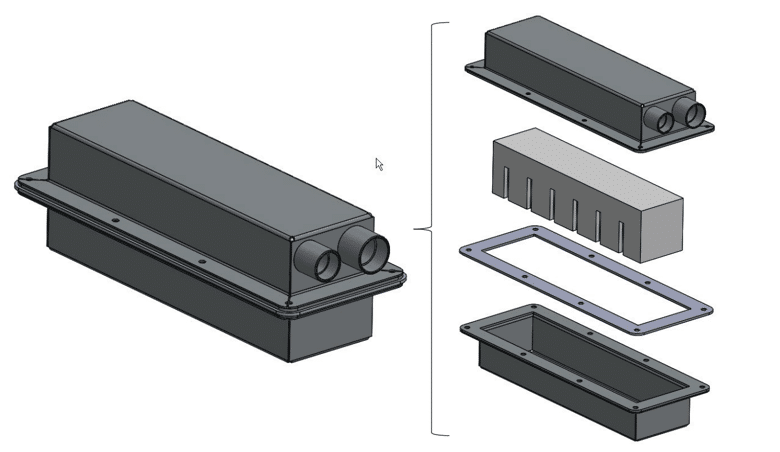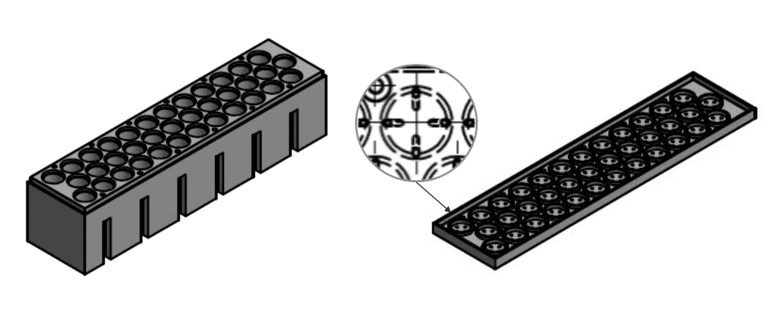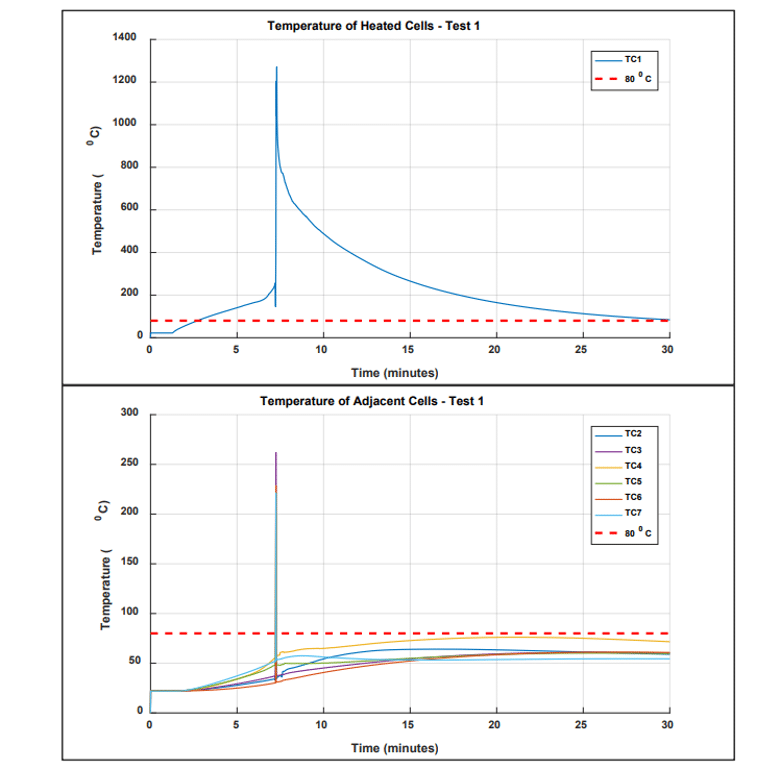Unmanned Aircraft Systems (UAS) require top-tier safety, particularly due to the inherent risks of lithium-ion battery technology. Thermal runaway, a cell-level thermal event that triggers a chain reaction throughout the battery pack, is a significant threat. Pyrophobic Systems, a leader in lithium-ion battery safety solutions, introduces LithiumPrevent™, a pioneering intumescent technology designed to contain and manage thermal runaway events, enhancing safety in UAS operations.
Project Overview: Addressing the Challenge of Thermal Runaway
The Federal Aviation Administration’s (FAA) project DOT/FAA/TC-20/32 aimed to study and develop technology to reduce the risks associated with lithium-ion batteries installed on aircraft. The study demonstrated the design of a lithium-ion battery module capable of preventing thermal runaway propagation during an event involving two cylindrical cells. Pyrophobic Systems collaborated on the project, constructing the cell holder and lid from LithiumPrevent, its passive thermal containment technology.

Pyrophobic’s Pioneering Solution: LithiumPrevent
Pyrophobic’s meticulously engineered LithiumPrevent cell holders target two critical functions during a thermal runaway event:
- Thermal Separation: Isolates and cools the failing cell, preventing a cascading failure that would engulf neighboring cells.
- Safe Venting of Heated Electrolyte: Mitigates pressure build-up within the battery pack, significantly reducing the risk of explosion.

This innovative two-pronged approach effectively mitigates thermal runaway propagation by preventing the overheating of adjacent cells, safeguarding the entire battery system.
Rigorous Testing and Verification: A Collaborative Effort
To validate the effectiveness of LithiumPrevent, Pyrophobic Systems collaborated with DNV GL on a project funded by the FAA. A comprehensive testing and verification program consisting of four key phases ensured the success of the project:
- Background Literature Review: DNV GL conducted a thorough review of existing research on battery safety, performance characteristics, and relevant industry codes. This informed the design strategy for the battery module.
- Basic Design Testing: Realistic testing scenarios were conducted at DNV GL’s facility using commercially available cells. These tests provided valuable insights into cell behavior, the effectiveness of LithiumPrevent in heat dissipation, and the limitations of early detection sensors.
- Computational Modeling: Data from the initial testing phase was used to refine the battery module design through a two-part modeling approach, optimizing flow and thermal management, particularly the venting of gases.
- Prototype Testing: The final phase involved rigorous testing of the prototype battery cell holder manufactured from LithiumPrevent. The tests evaluated off-gas control, cascading prevention, and heat dissipation. While Pyrophobic’s intumescent polymer cell holder successfully prevented cascading thermal runaway, the testing identified areas for improvement in early gas detection and cell containment within the module.
Results and Discussion
The testing program yielded promising results:
- Cascading Thermal Runaway Prevention: Pyrophobic Systems’ cell holder successfully prevented cascading thermal runaway. When a cell was forced into thermal runaway, adjacent cells only exhibited a temporary temperature rise, with no adverse effects on the state of charge.
- Early Gas Detection: The Nexceris sensor provided early detection of gas release in some tests. However, detection consistency was limited, possibly due to the Pyrophobic cell holder design positively affecting gas flow.
Type 1 Block

Impact and Future Advancements
The successful implementation of the LithiumPrevent cell holder and lid demonstrates the significant potential for safety material technologies in lithium-ion battery systems. This project paves the way for further advancements and applications across various industries that rely on lithium-ion batteries. Pyrophobic Systems’ unwavering commitment to enhancing the safety of lithium-ion battery energy storage systems is further solidified by contributing to this groundbreaking project.
Conclusion: A Collaborative Leap Forward in UAS Battery Safety
This collaborative effort between the FAA, DNV GL, Nexceris and Pyrophobic Systems demonstrates the potential of LithiumPrevent to enhance battery safety in aviation applications or any application involving cylindrical cells and/or requiring thermal separation. The project successfully validated the concept of using Pyrophobic’s intumescent cell holders to prevent cascading thermal runaway. Future developments will focus on optimizing material performance and overall battery safety through continuous development research and design improvements.
For further details on the project and to access the full FAA report, please refer to the FAA Technical Library Catalog and search for the report number “DOT/FAA/TC-20/32”.
Ensure Peak Performance and Safety for Your UAS
Download our LithiumPrevent Data Sheet to explore the technical specifications and performance data of this innovative technology. Additionally, contact Pyrophobic Systems today to discuss how LithiumPrevent can be integrated into your specific UAS applications. Our team of experts can help you ensure the safety and reliability of your drone operations.




